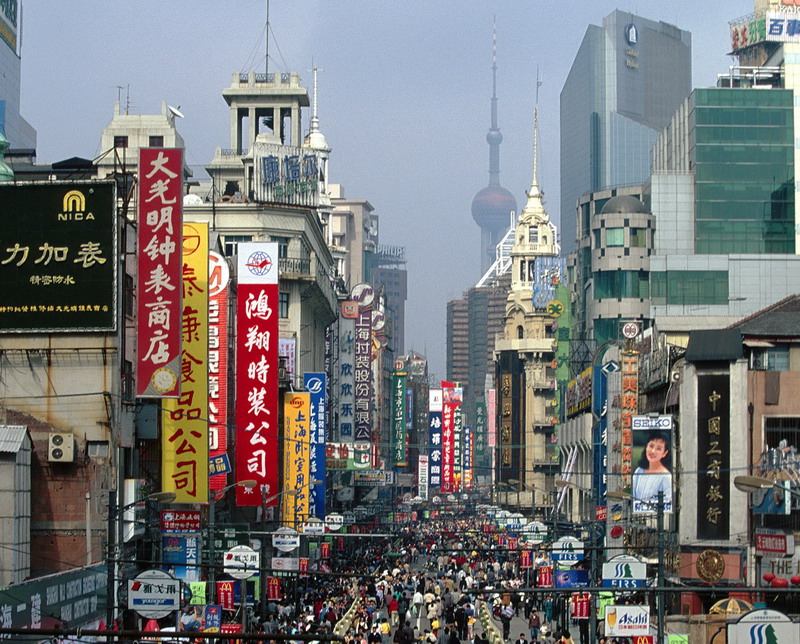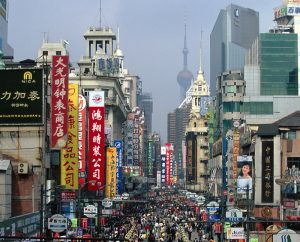For decades, China’s international retail sector was defined by one word: luxury. And the status market isn’t going away; Ernst & Young showed the nation’s estimated 300,000 millionaires to be virtually bullet-proof as they poured $6 billion into luxury purchases last year. High-end retail potential should only get stronger as the ranks of the ultra-rich swell nearly 20 percent annually, states Capgemini and Merrill Lynch’s 2008 “Asia-Pacific Wealth Report.” Their willingness to spend some of their $1 trillion wealth on brands such as Hermès, LVMH’s portfolio, Ermenegildo Zegna and Versace will make China the world’s largest consumer of luxury goods by 2015, projects Goldman Sachs.
While all these zeros are tantalizing, they’re also misleading. “Luxury brand sales account for significantly less than 1 percent of total retail sales in China,” says Paul French, founder and publishing/marketing director for the market research firm Access Asia China (Shanghai). So what’s driving a retail sector French predicts will fast-track from today’s $824 billion to 2016’s $1.4 trillion? A middle class that’s expanding exponentially faster.
Mass Appeal
The number of mid-level wage earners in China is poised to skyrocket (see sidebar, below), and this group is ready to shop. Upper mass market fashion retailers have a wide-open playing field. “The likes of Zara and Mango are hot,” says French. “Currently there are no local challengers. We’re seeing growth by outdoor brands such as Columbia and The North Face as Chinese consumers diversify away from sportswear somewhat. Footwear is another good sector, and in sportswear, Li Ning, Anta and others have done well copying Nike and Adidas.”
Overall, the odds-on favorites will be retailers that address pent-up demand for aspirational purchasing, allowing consumers “to have that celebrity look, especially that of Chinese and Korean movie stars,” says Song Pak, chief creative officer, AMM Asset Development Inc. (Seoul).
Cho Suzumura, designer, retail environments, MulvannyG2 Architecture (Bellevue, Wash.), sees a big gap between supply and demand. “China lacks the happy medium between high-end luxury brands and typical low price-driven Chinese retail brands,” he says. “There’s a lot of upside for international brands that deliver value while providing a total experience.”
Western Retailers’ Competitive Advantage
Advertisement
Delivering that experience is a major selling point for offshore retailers looking to enter China. Dave Nelson, vp, client strategy, for architecture firm JGA (Southfield, Mich.), explains: “Very often, the Chinese marketplace still relies on what’s been done before – visually, conceptually and in merchandising terms. So homegrown concepts may look and feel like the brands that inspired them, but they fail to grasp the fundamentals of the brand and the consumer experience. That’s where U.S. retailers and designers can add diligence and rigor,” he says. They also bring fresh thinking, he adds, which appeals to a young, hip market. Brands that move merchandising away from the commodity-driven approach that typifies China’s mass-market vendors will have a major advantage.
Historically, says Rick Keller, director of Vertical Retail Consulting (Shanghai), Chinese consumers shopped exclusively by price. “They didn’t care how products were merchandised. Items were just piled on tables or in bins.” Now, shoppers have higher expectations about the quality of products and the shopping experience. Window displays are starting to draw customers into the store. “When it comes to design, branding and merchandising, almost everything U.S. retailers and designers bring to the table is valuable,” Keller says.
Challenges Remain
Still, there’s a lot of homework to be done before Western retailers open for business in China. Entry into the World Trade Organization in 2004 removed most of the restrictions on foreign direct investment and joint ventures. Even so, having a strong local partner can both increase the cultural comfort level and lower business risk, says Mary Mark, senior project manager, Yabu Pushelberg (Toronto).
“Managing the labor force is one of the most challenging aspects of doing business in China,” says the Hong Kong-born-and-raised Mark. “A strong partner will push for good workmanship.” Local expertise can also help retailers navigate tough issues such as high import taxes and repatriation of funds.
That may become even more important as retail development expands in secondary and tertiary cities, says Paula Stafford, executive vp in Callison Architecture’s Seattle office. She sees a substantial pipeline of shopping centers being developed as components in mixed-use complexes in the urban cores she describes as “China’s smaller city equivalents of Salt Lake City and Cincinnati.” But there’s one notable difference: “These malls could have foot traffic of 500,000 to 600,000 people a day,” says Paul Makowicki, principal with Callison.
Advertisement
Even in China, opportunity has a shelf life. French’s advice to the world’s retailers is: Act now. “Foreign retailers and retail suppliers have much to offer in this market, but competition is tough,” he says. “The years of rapid retail growth in China could be about to end, making this a crucial time in which to gain a foothold.”
SIDEBAR: NEED-TO-KNOW BASICS
The numbers
China’s middle class will exceed 340 million and control
40 percent (versus today’s 27 percent) of the country’s total urban disposable income by 2016, according to Global Demographics, PRC State Council Development Research Center and Monitor Group.
The targets
Over 270 cities have more than a million people. The ones to watch, says MulvannyG2’s Cho Suzumura: Shanghai for flagships, then Beijing for large-format stores as well as luxury brands; first-tier cities including Guangzhou, Chongqing,
Xi’an and Nanjing; and second-tier cities such as Wuxi,
Tianjin and Dalian.
Advertisement
The market
An $824 billion retail sector is being enhanced by China’s own $586 billion stimulus package. New homeowners are helping grow the home improvement /DIY sector more than 10 percent annually, reports Access Asia. (Government reports show four out of five people own their home.) The food/specialty market is on the rise, as are niche concepts targeting babies and children. And what about the 54 percent of the population Nielsen Consumer Confidence Survey identifies as not yet having a cell phone?
For more on the ins and outs of doing business in the world's most populous country, click here.


 Photo Gallery3 days ago
Photo Gallery3 days ago
 Headlines2 weeks ago
Headlines2 weeks ago
 Sector Spotlight2 weeks ago
Sector Spotlight2 weeks ago
 Headlines1 week ago
Headlines1 week ago
 Headlines5 days ago
Headlines5 days ago
 Headlines3 days ago
Headlines3 days ago
 Headlines2 weeks ago
Headlines2 weeks ago
 Designer Dozen1 week ago
Designer Dozen1 week ago

















